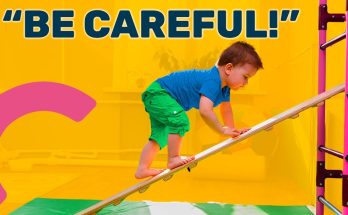Burping is an essential practice for newborns and infants, as it helps release air swallowed during feeding, reducing discomfort and potential fussiness. However, some babies can be particularly challenging to burp, leaving parents searching for effective techniques. This comprehensive guide explores various methods and tips to assist in burping a baby, especially when traditional approaches seem ineffective.
Understanding the Importance of Burping
During feeding, babies often swallow air, which can become trapped in their stomachs, leading to discomfort, bloating, and irritability. Burping helps expel this excess air, alleviating potential pain and making room for continued feeding. While not all babies need to be burped after every feeding, it’s crucial to recognize when your baby requires assistance in releasing trapped air.
Common Burping Positions
Several traditional burping positions are widely recommended:
-
Over-the-Shoulder: Hold your baby upright against your chest, with their chin resting on your shoulder. Support their bottom with one hand while gently patting or rubbing their back with the other.
-
Sitting on Your Lap: Sit your baby on your lap, facing away from you. Support their chest and head with one hand, allowing them to lean slightly forward. Use your other hand to gently pat or rub their back.
-
Lying Across Your Lap: Place your baby face down across your knees, ensuring their head is slightly elevated and supported. Gently pat or rub their back to encourage burping.
While these positions are effective for many infants, some babies may require alternative techniques, especially if they are difficult to burp.
Alternative Techniques for Difficult-to-Burp Babies
If traditional methods are unsuccessful, consider the following approaches:
-
Walking Burp: Hold your baby upright against your chest in the over-the-shoulder position and gently walk around. The motion and upright posture can help release trapped air.
-
Bouncing Method: While holding your baby in an upright position, gently bounce them up and down. Ensure the movements are soft and controlled to avoid discomfort.
-
Bicycle Legs: Lay your baby on their back and gently move their legs in a bicycling motion. This can help move gas through the intestines, potentially leading to a burp.
-
Tummy Time: Placing your baby on their stomach for short periods can apply gentle pressure to the abdomen, aiding in the release of trapped air. Always supervise your baby during tummy time.
-
Massage Technique: Gently massage your baby’s back while they are in an upright position. Using circular motions can help stimulate burping.
For a visual demonstration of effective burping techniques, you may find this video helpful:
Tips to Enhance Burping Success
-
Stay Calm and Patient: Babies can sense parental stress, which may make them more fussy. Approach burping with a calm demeanor to help your baby relax.
-
Incorporate Movement: Gentle movements, such as rocking or walking, can assist in releasing trapped air.
-
Switch Positions: If one method isn’t working, try another. Sometimes a simple change in position can make a significant difference.
-
Monitor Feeding Habits: Ensure your baby is feeding in a calm environment. If bottle-feeding, check that the nipple flow is appropriate to prevent excessive air intake.
-
Use Gentle Pressure: Applying slight pressure to your baby’s tummy, such as during tummy time or while holding them against your chest, can help expel gas.
When to Seek Professional Advice
While burping is a common practice, persistent difficulties may warrant professional consultation. If your baby shows signs of severe discomfort, excessive spit-up, or feeding issues, it’s advisable to consult a pediatrician to rule out underlying conditions.
Conclusion
Burping is a vital aspect of infant care, aiding in the release of swallowed air and promoting comfort. While some babies burp easily, others may require alternative techniques and a bit more patience. By experimenting with different positions and methods, you can find the most effective approach for your baby, ensuring a more comfortable and enjoyable feeding experience for both of you.



